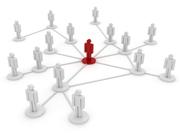Advertisment
Social contact can ease pain related to nerve damage, animal study suggests

Companionship has the potential to reduce pain linked to nerve damage, according to a new study.
Mice that were paired with a cage-mate showed lower pain responses and fewer signs of inflammation in their nervous system after undergoing surgery that affected their nerves than did isolated mice, suggesting that the social contact had both behavioural and physiological influences.
The social contact lowered the pain response and signs of inflammation even in animals that had experienced stress prior to the nerve injury.
These mice experienced a specific kind of nerve-related pain called allodynia, which is a withdrawal response to a stimulus that normally would not elicit a response – in this case, a light touch to the paw.
“If they were alone and had stress, the animals had increased inflammation and allodynia behaviour,” said Adam Hinzey, a graduate student in neuroscience at Ohio State University and lead author of the study. “If the mice had a social partner, both allodynia and inflammation were reduced.”
“A better understanding of social interaction’s beneficial effects could lead to new therapies for this type of pain,” Hinzey said.
Hinzey described the research during a press conference in New Orleans at Neuroscience 2012, the annual meeting of the Society for Neuroscience.
In the study, researchers paired one group of mice with a single cage-mate for one week while other mice were kept socially isolated. For three days during this week, some mice from each group were exposed to brief stress while others remain non stressed.
Researchers then performed a nerve surgery producing sensations that mimic neuropathic pain on one group of mice and a sham procedure that didn’t involve the nerves on a control group.
After determining a baseline response to a light touch to their paws, researchers tested all groups of mice behaviourally for a week after the surgery. Mice that had lived with a social partner, regardless of stress level, required a higher level of force before they showed a withdrawal response compared to isolated mice that were increasingly responsive to a lighter touch.
“Animals that were both stressed and isolated maintained a lower threshold – less force was needed to elicit a paw withdrawal response. Animals that were pair housed and not stressed withstood a significantly greater amount of force applied before they showed a paw withdrawal response,” Hinzey said. “Within animals that were stressed, pairing was able to increase the threshold required to see a withdrawal response.”
He and colleagues examined the animals’ brain and spinal cord tissue for gene activation affecting production of two proteins that serve as markers for inflammation. These cytokines, called interleukin-1 beta (IL-1B) and interleukin-6 (IL-6), are typically elevated in response to both injury and stress.
Compared to animals that received a sham procedure, isolated mice with nerve damage had much higher levels of IL-1B gene expression in their brain and spinal cord tissue. The researchers also observed a significant decrease in gene activity related to IL-6 production in the spinal cords of non stressed animals compared to the mice that were stressed.
“We believe that socially isolated individuals are physiologically different from socially paired individuals, and that this difference seems to be related to inflammation,” said Courtney DeVries, professor of neuroscience at Ohio State and principal investigator on this work. “These data showed very nicely that the social environment is influencing not just behavior but really the physiological response to the nerve injury.”
For further information contact: Adam Hinzey Adam.Hinzey@osumc.edu Ohio State University





